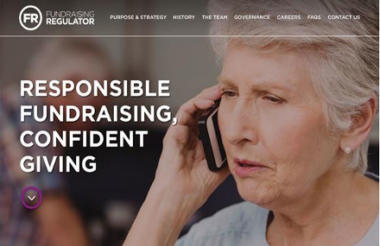The Fundraising Regulator has today published the final arrangements of its registration and levy system, including changes to the tiered levy.
The Fundraising Regulator have today confirmed that it will be making a number of changes to its proposed tiered levy system at both the top and the bottom of the levy payments, to ensure that bands “do not overlap” with one another.
The changes will see large fundraising charities at the top end of the levy pay more than was proposed originally.
While the “steeped, smooth banded levy” set out at the beginning of the consultation will be retained, adjustments have been made “at the top and bottom of the levy so that organisations spending more pay a higher levy whilst those spending less will pay a smaller sum”.
Eleven levy bands
The orignial proposal outlined eight separate bands, this has been increased to 11. There was criticism of the original proposals because smaller charities would pay proportionately more than large ones. Under the revised bands smaller charities will pay lower fees than before, but they they will still pay proportionately more than larger charities.
The highest band – for charities spending over £50m on fundraising annually – will now be split in two: with those spending more than £50m now contributing a levy of £15,000 annually, as opposed to the original £10,000 proposal.
The second highest band – for charities that spend between £20m and £49.9m – will now also be paying proportionately more, than they were originally: £12,000 a year, as opposed to £10,000.
Those paying between £5m and £20m have also been split into two bands, with those spending between £5m and £9.9m will now be asked to pay £6,000 and those spending between £10m and £19.9m will be asked to contribute £8,000 a year.
Those at the bottom of the levy – spending between £100,000 and £149,999 on fundraising – will be pay between £150 and £250 a year.
The basis on which charities who fall outside the levy, but still wish to register to the Fundraising Regulator, have also changed. The original “flat fee” of £250 that was proposed will now be changed to “follow the approach used by the Fundraising Standards Board”. A registration fee based on annual income on a sliding scale will now be used instead.
The flat fee amount that exempt charities will contribute will also be lowered from £1,500 to £1,000 a year.
The regulator also confirmed that the date from which charities will be asked to pay the levy has been pushed back one month and will start on 1 September.
The regulator said that many of the changes were informed by "points raised" in some of the 123 responses it recieved during the consultation period on the levy, which ran in July.
Fundraising Regulator won't 'name and shame'
The final arrangements have also seen the Fundraising Regulator reconsider “naming and shaming” charities who fall within the levy bandings, but refuse to pay.
“We accept that 'naming and shaming' those who do not pay the levy could be counter-productive and would not be our chosen response to start with”.
During the first 3 years of the levy, the regulator also said that it “will discuss with the Charity Commission how the new SORP arrangements can be amended so that by the time the levy is reviewed in, say, 2 years’ time, an appropriate measure for fundraising expenditure is again included in annual returns”.
The regulator said that, in the interim, it “expects that charities will keep a record of their fundraising expenditure as a matter of good practice even if the SORP does not require it at the moment”.
The regulator does reiterate however the government’s “reserve powers in section 14 of the Charities (Protection and Social Investment” Act 2016”.
The changes still mean that the levy should bring the Fundraising Regulator an annual budget of around £2.5m to cover operational costs and other things.
The regulator said that its first annual budget and business plan will be published in full “later in September 2016”. This will also “provide details of how setting up costs provided by 45 charities have been used”.
Related articles












